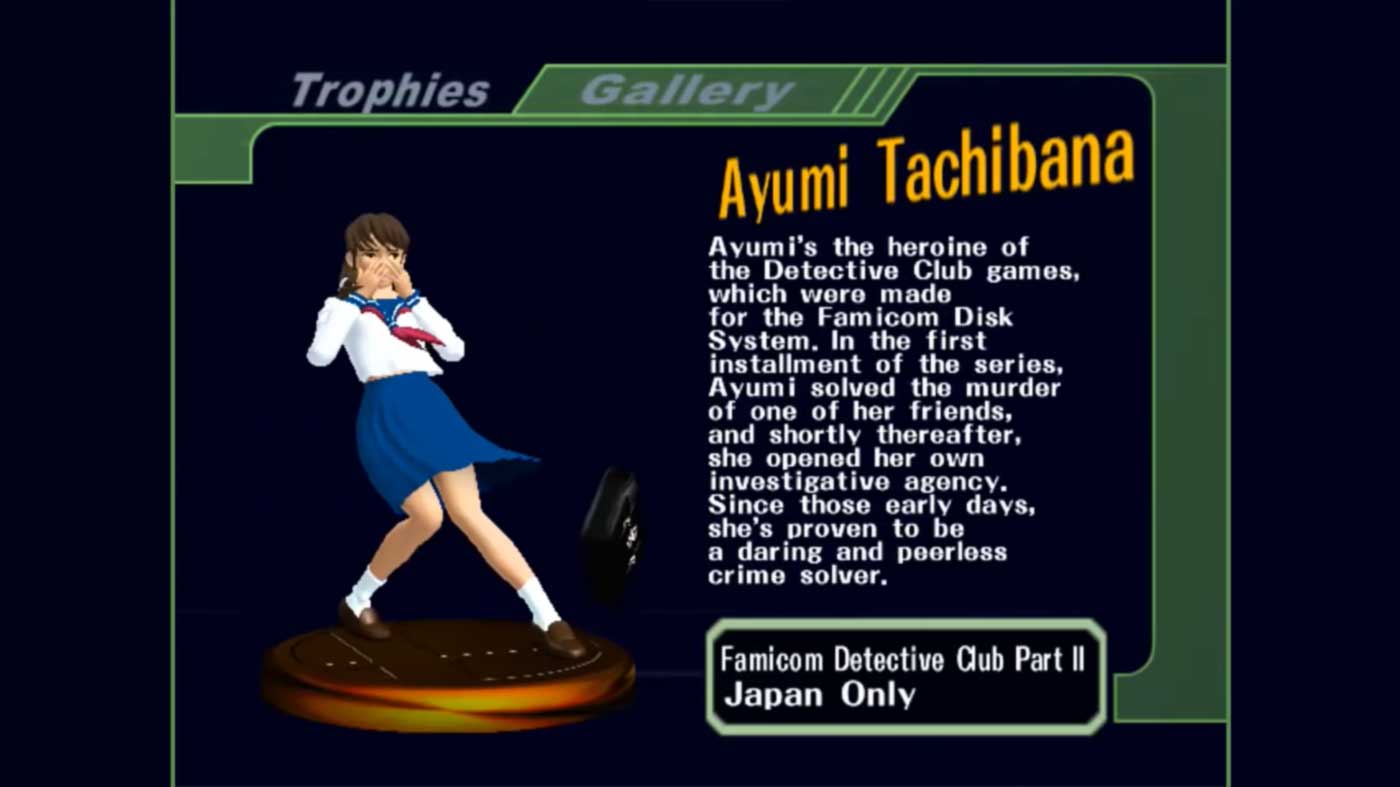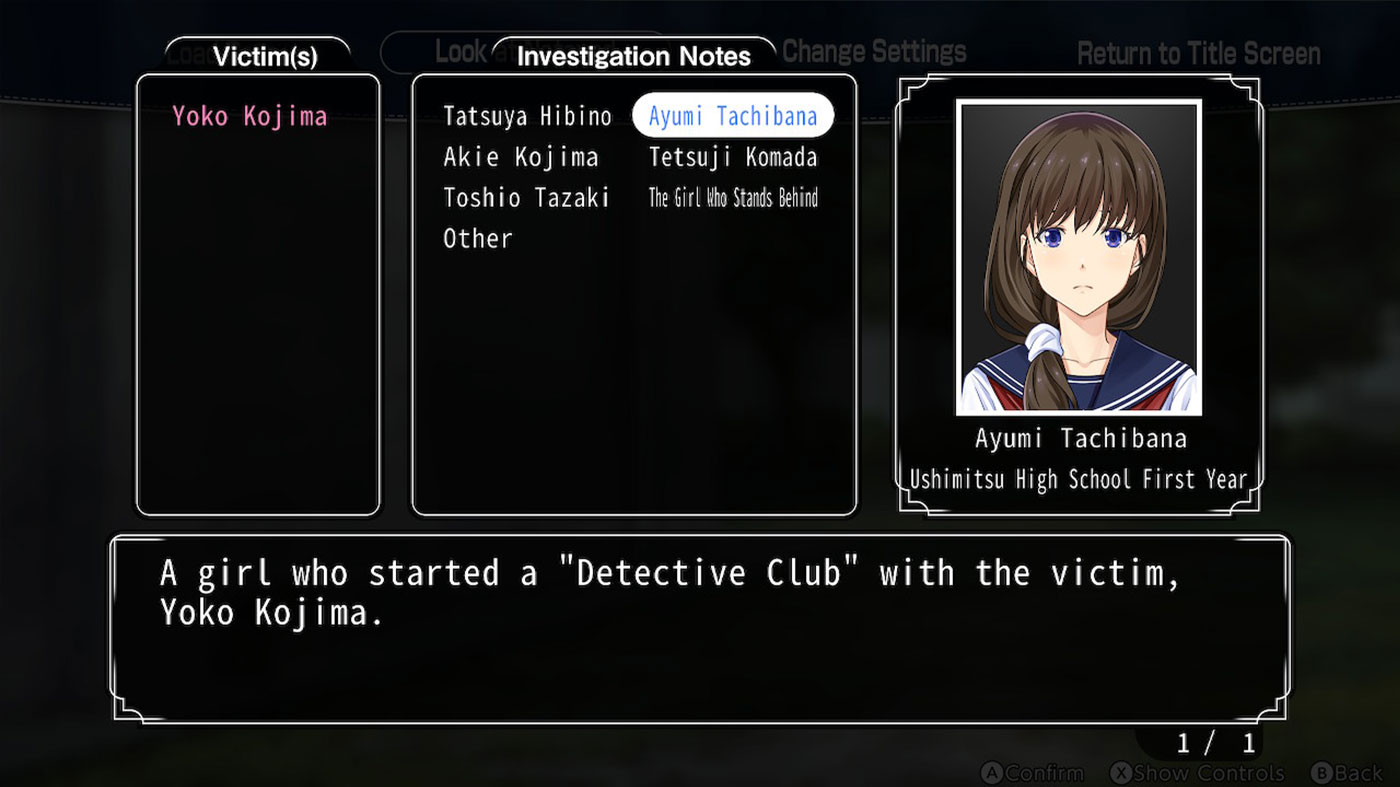Growing up, I was one of the most hardcore Nintendo fans. I’d fought battles for them on forums, to the point where I’d insisted that Resident Evil 4 was only able to run on the Gamecube and no other console because it was so powerful (yeah). It was cringeworthy. It was embarrassing. But I’m a different person now. Imagine my surprise, however, when Nintendo announced they were bringing Famicom Detective Club to the Switch. Not only was it a series that I’d never heard of, but it’s also a series that sounded right up my alley. A murder mystery thriller inspired by the likes of Dario Argento? Sign me up.
Truth be told, you might have heard of Famicom Detective Club if you’ve played Super Smash Bros. Melee before. There’s a single trophy in that game that references it, and I specifically remember unlocking it and wondering who the hell it was. I’d even wager it’s almost everyone’s first exposure to the previously Japanese-only franchise from Nintendo’s history. Ayumi almost made it into Melee, even. Eventually, Nintendo made the decision to cut her from the game as she was a little bit too obscure for the West.
But enough of the past. Today, Nintendo has localised and brought the game to the Nintendo Switch. The main franchise consists of two games, both written by Yoshio Sakamoto, who would go on to direct many Metroid games in the future.
The Missing Heir is the first game, while The Girl Who Stands Behind is the second game, with the latter being a prequel. Both games released for the original NES in the 80s, while the second game was remade for the SNES in the 90s. But neither has been available in English nor localised (officially) for distribution outside of Japan. Until now.
Given how important the story is to the whole experience, I won’t ruin any of that for you with a traditional blow-by-blow preview or recap. Instead, here’s five things I’ve noticed about both of the Famicom Detective Club game, after spending my time with the first five chapters of both games.
IT’S HAD A SERIOUS GLOW-UP FROM WHEN IT FIRST APPEARED
As you will notice as you read through this preview, both games in the Famicom Detective Club look absolutely phenomenal on the Switch. These remakes are just that – remakes – and not simple ports or upscales. When the games appeared on the NES and SNES, they sported much more simplistic scenes, but the Switch version takes things to the next level with completely redrawn art and rejigged animations.

As you can see above, a lot of care has gone into making sure the Switch version honours the look of each scene from the NES and SNES versions of the games while adding a lot more detail to modernise it. There are even nice, subtle animations that give everything a three-dimensional look to make things really pop on the screen.
You can see some comparison scenes throughout this preview just to get the gist of how much developer Mages have improved the visuals of both games.
IT’S A PURE VISUAL NOVEL AND NOTHING ELSE
Given the name and the look of the game, it’s easy to assume that Famicom Detective Club would be similar to other games like Ace Attorney or Professor Layton. But those games are firmly considered to be “adventure” games, given that they have a more interactive aspect. Famicom Detective Club, on the other hand, is a pure visual novel. There’s not a whole lot of game to “play” here beyond making a decision on who to talk to next or what to talk to them about. It’s a largely linear experience.
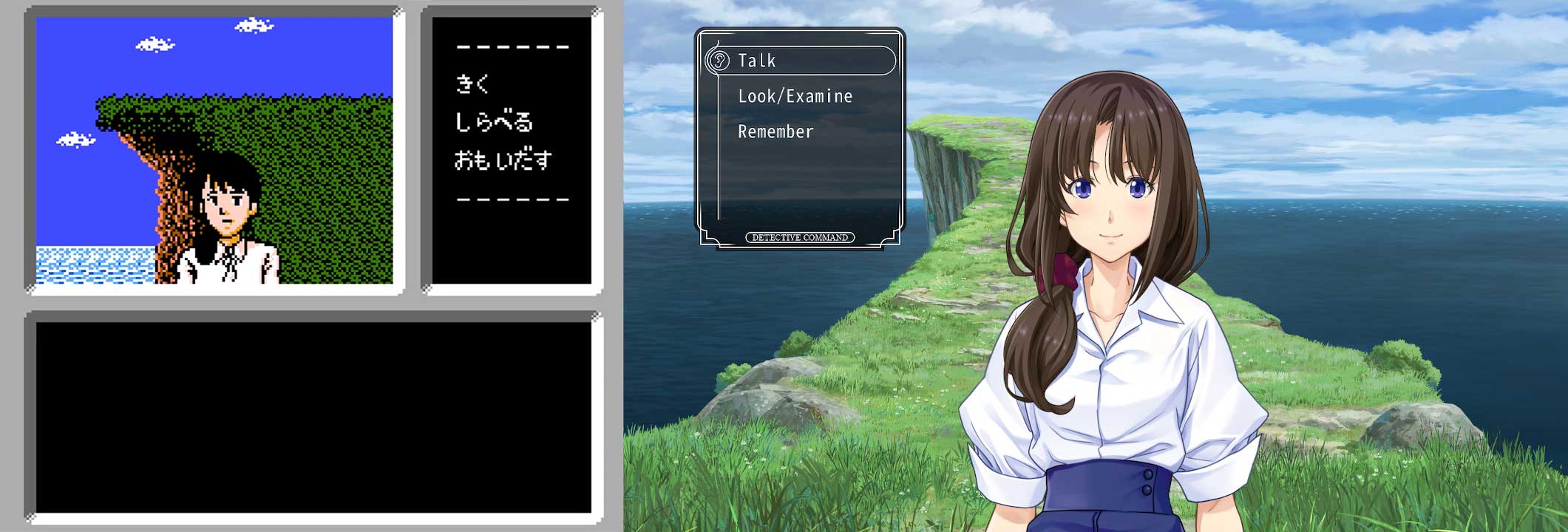
But that’s not necessarily a bad thing because it’s a rather engrossing experience too. While there’s really not much to the gameplay of Famicom Detective Club on a mechanic level, the story is strong enough that it’s hard to find an issue with it – it’s incredibly compelling. At any point where I’d taken a break from the game, I’d often found myself wanting to get back to it, to work out just what’s happening, eager to unravel the mysteries that the game presented.
EACH GAME HAS TWO SERIOUSLY INTRIGUING PLOT THREADS
The Missing Heir is easily described as a Knives Out or Cluedo type of mystery. You’re employed by a rich family in Japan to discover who murdered the matriarch and chairwoman of the family business. Each member of the family has a reasonable motivation to do so, but The Missing Heir does a great job of setting up multiple red herrings. While this is the main plot, another storyline sees yourself trying to work out how you lost your memory in the opening scenes, and why someone might have attacked you.
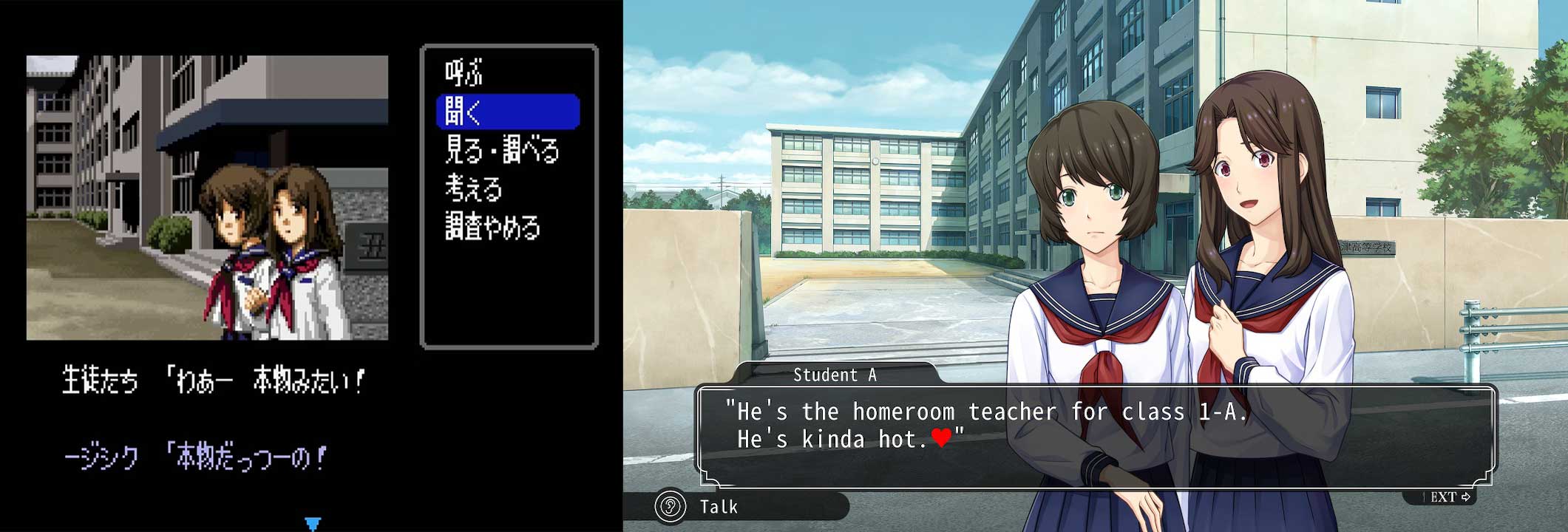
The Girl Who Stands Behind is a prequel but still follows the same two protagonists. In this storyline, the protagonists first meet, and begin investigating the mysterious drowning of a girl attending a suburban high school. At the same time, your detective mentor is investigating a case that’s almost about to have its statute of limitations run out. Through some investigations, it’s discovered that a creepy urban legend spread around the school, about “The Girl Who Stands Behind” might link the two cases.
I’m excited to see if these stories intertwine properly to offer a good and satisfying conclusion, but only time will tell.
THERE MIGHT (OR MIGHT NOT BE) A SUPERNATURAL ASPECT TO IT
I obviously don’t know how this will play out, given that I’ve only done the first five chapters of each game. But so far, it seems that both games have a significant element that could be construed as supernatural. In The Missing Heir, hearsay around the village you’re investigating insists that a vengeful ghost from the family’s past is righting those who wronged her. As I continue my investigation in the beautiful Japanese countryside, and more and more villagers insist they’ve seen a ghost, I’m at the point where I’m not sure what to believe.
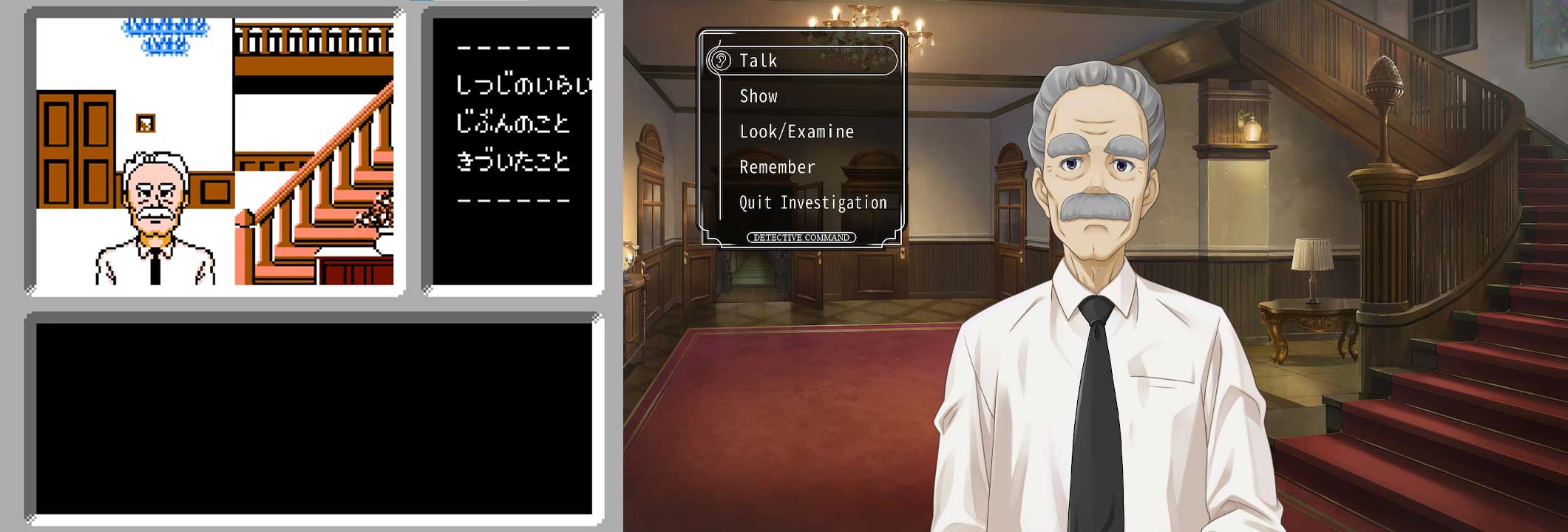
In The Girl Who Stands Behind, students at the high school we’re investigating often speak of “The Girl Who Stands Behind”, and how she is said to haunt the school. It’s a very obvious example of the Maybe Magic, Maybe Mundane trope that permeates so many games today, but the idea that either could be plausible is incredibly enticing to me. I’m beyond excited to get through the later chapters of each game to see whether it’s something supernatural or something mundane, and I’m sure no matter the result I’ll be satisfied. But I will say one thing – The Girl Who Stands Behind is much creepier than The Missing Heir and that’s thanks to some fantastic music and genuinely chilling storytelling – there’s some really nice (but light) horror elements at play here.
THE NOTEPAD IS A HELPFUL TOOL TO RECAP EVERYTHING
Often in a lot of these games, especially ones where there are so many characters, the details of everything can be muddied. In both Famicom Detective Club games, players are fortunate enough to have a notepad that tracks all the characters the player has met. Not only that, but reading through the information you glean from various sources, the notepad also highlights any relevant persons mentioned in that information.
As we can see above, in a screenshot from the early chapters of The Girl Who Stands Behind, the notepad has already tracked six persons of interest. When reading through Ayumi’s dossier, the notepad not only recaps all the information I’ve learned about her but it highlights in pink people that are being spoken about in the current note. It’s a godsend, especially as these notes expand to feature over twenty characters.
It’s a very simple feature but one that I feel helps you stay on top of things and easily build quick links between the people you’re interviewing. Of course, it has little bearing on the gameplay, as it’s so simple, but I appreciated being able to pause and just recap everything I’d learned so far. The game even has a handy recap every time you go to reload your save at the beginning of each session.
All in all, I’m pretty keen to jump into the future chapters of Famicom Detective Club. So far, both games have really grabbed me and I can’t wait to see how it all pans out.
It’s phenomenal to me that these stories from so long ago still hold up today – and especially so for The Girl Who Stands Behind, which has spooked me (only a little) during some of my late-night play sessions. But perhaps that’s a testament to the strength of not only the writing but the first-time localisation of these games into English.
Famicom Detective Club: The Missing Heir and Famicom Detective Club: The Girl Who Stands Behind both launch exclusively for Nintendo Switch via the eShop on May 14th, 2021.



